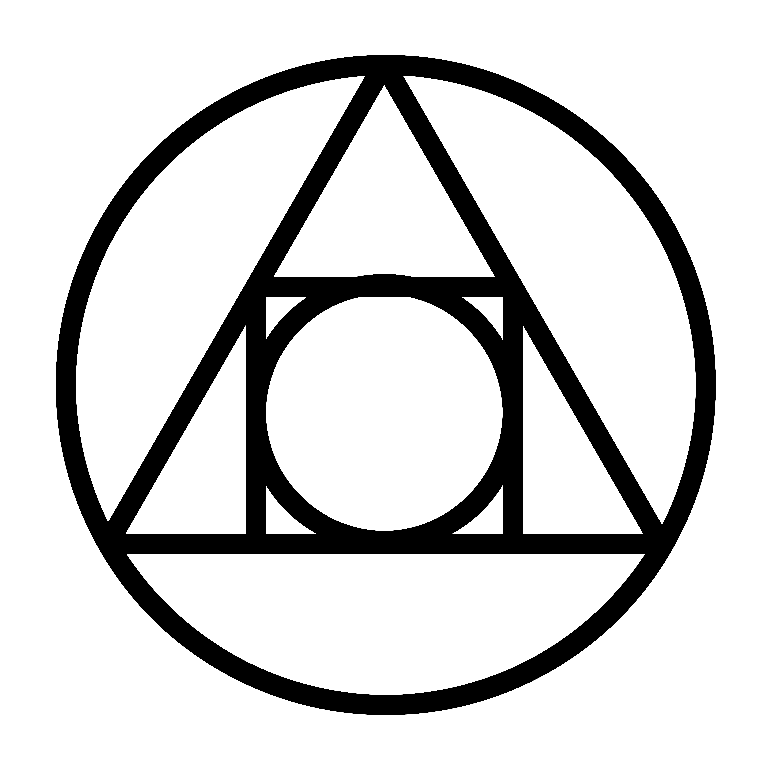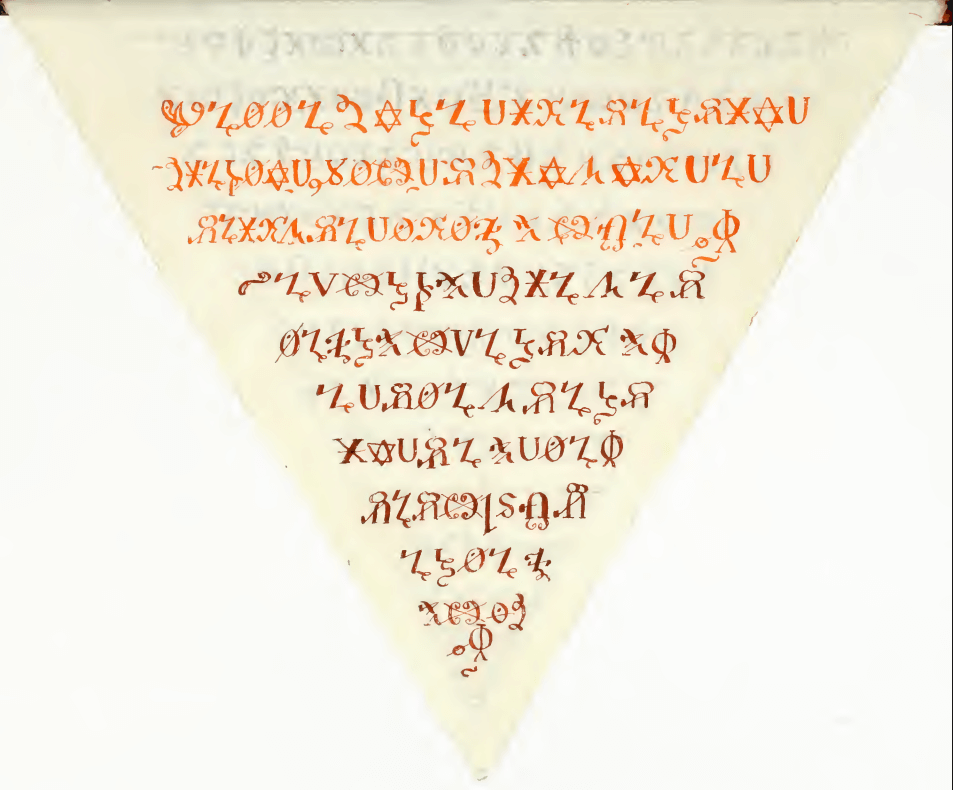🜍 The Divine Names of the Triangular Book of Saint-Germain
Introduction
The Triangular Book of Saint-Germain contains long strings of “divine names.” They appear during the ritual’s invocation phase, when the operator and Levite assistant consecrate the circles and summon aerial intelligences.
These words—NOTAMARGATET, YANODA, AOTHIO, SOIGAD, and others—are not random inventions. They descend from earlier Western grimoires where “barbarous names” acted as vibrational formulas to attune the operator to angelic hierarchies.
A full translation of the invocation appears in Triangular Book: Complete Translation and Comparative Notes.
1. Origins in the Solomonic Tradition
The strongest parallels occur in the Solomonic magical corpus, particularly the Key of Solomon (Clavicula Salomonis) and the Heptameron of Pietro d’Abano (13th century).
Both manuals teach the magician to pronounce long sequences of divine and angelic names—often distorted Hebrew or Greek—to sanctify the circle and command spirits.
Familiar examples such as Agla, Tetragrammaton, Adonay, and Elohim occur in both traditions. The Triangular Book’s unique hybrids—NOTAMARGATET and YANODA—appear to be phonetic reversals or cipher-forms of those names.
Primary sources:
-
Clavicula Salomonis (Mathers ed., 1889, Bk I Chs I–V)
-
Heptameron seu Elementa Magica (ed. Turner, 1655)
2. Structural Role in the Ritual
Within the Saint-Germain manuscript, the names form part of the Consecration of the Circles:
“NOTAMARGATET — bless this circle — bless YANODA — bless MIOLE — … bless BADORA.”
This mirrors the Heptameron’s instruction to walk the circle clockwise while invoking divine powers at each quarter.
Each word seals a direction or element; the closing refrain “Thou who livest and reignest through all the centuries of the centuries” echoes the Latin Qui vivis et regnas in saecula saeculorum found in both Church and magical liturgies.
3. Linguistic Composition
A comparative analysis suggests most names are ciphered Hebrew or composite forms:
Cipher name: YANODA
Probable root: Adonai (Lord) reversed
Comment: Phonetic transposition
Cipher name: NOTAMARGATET
Probable root: Tetragrammaton reversed + mirror suffix
Comment: Composite divine name
Cipher name: AOTHIO
Probable root: Aoth Abel (Air spirit, Heptameron)
Comment: Directional linkage
Cipher names: SORIDIS, APHAL, THOBASSA
Probable root: Greek/Hebrew-style ritual endings
Comment: Stylized angelic extensions
Such mutations reflect the 17th–18th century practice of encrypting sacred words to guard initiatory material.
4. Function and Meaning
In grimoires and Hermetic magic alike, divine names performed three roles:
-
Boundary creation — to purify and protect the circle.
-
Authority — to invoke divine permission over the elemental spirits.
-
Rhythmic induction — to regulate breath and focus during trance recitation.
In the Saint-Germain system, this triadic use of language mirrors the manuscript’s geometry—triangle within circle—uniting form, sound, and intent into a single operative structure.
5. Conclusion
The Triangular Book does not invent a new theology; it recasts the Solomonic magical grammar in cipher and symbolism.
Its “divine names” represent an eighteenth-century echo of Renaissance angelology, filtered through Masonic and Hermetic reformers.
Understanding these linguistic roots clarifies that Saint Germain’s ritual was less about secrecy than continuity—the preservation of older sacred formulas in a new, geometrical language.
Further Reading & References
Primary Sources
-
Clavicula Salomonis (Key of Solomon), ed. S. L. MacGregor Mathers, 1889 → archive.org/details/KeyOfSolomonMathers1889
-
Heptameron seu Elementa Magica, Pietro d’Abano, ed. Turner 1655 → esotericarchives.com/abano/Heptameron.htm
Secondary Studies
-
A. E. Waite, The Book of Ceremonial Magic (1913 rev. ed.) → archive.org/details/bookofceremonial00waituoft
-
Joseph Peterson (ed.), The Secrets of Solomon: A Witch’s Handbook from the Trial Records of the Inquisition (Weiser Books, 2018).
-
Nicholas Goodrick-Clarke, The Western Esoteric Tradition (Oxford University Press, 2008).
Saint Germain’s Triangular Book: The Ritual Explained
The Triangular Book of Saint-Germain: Complete Translation and Comparative Notes

